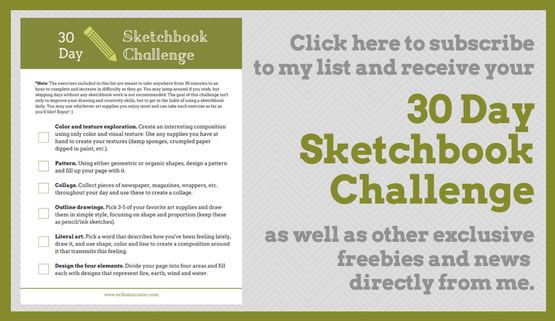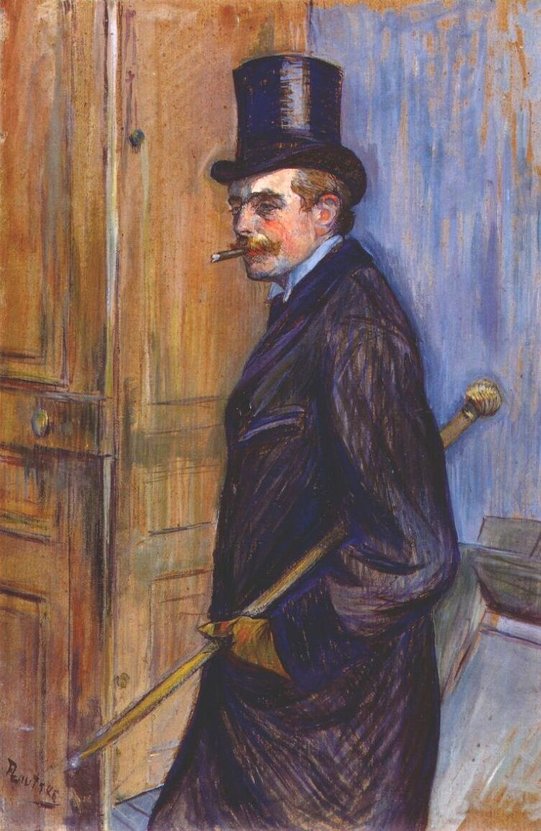|
*This post contains affiliate links. I receive small commissions for purchases made through these links at no extra cost to you. These commissions help me keep this site up and running, in order for me to keep providing helpful and inspiring art content. :)
Are you constantly trying to find inspiration by admiring other artists' work and find yourself copying more than you'd like? Do you feel like you are making no progress towards finding your own artistic style? Are you simply unable to produce as much original artwork as you'd like?
“Those who do not want to imitate anything, produce nothing." -Salvador Dali In this post I will explain one of the methods I use to make sure I produce original artwork while getting inspired by other artists. This strategy is an amazing way to work towards finding and developing one's own artistic style. Plus, it's very fun! The act of copying is a very delicate subject in the artistic field and just the word seems to put many of us on edge. I say, let's try to relax and admit that each one of us has been constantly inspired throughout his/her life by people, experiences, artwork (and by “artwork" I mean movies, music, theater, books, etc.), the environments we have lived in, advertising, and pretty much everything around us. Everything, and I mean everything, has a conscious or unconscious effect on us and, therefore, on the work we produce as artists. We have all been influenced by a combination of different things and have different likes and dislikes. This is not to say that two different artists are never going to produce similar work. There are bound to be similarities amongst us in terms of technique and/or subject matter because there are only a certain amount of techniques and subjects to work with. However, if we put in the effort to discover ourselves as artists (what techniques/supplies we enjoy working with most, what our own distinctive abilities as well as areas of improvement are, what ideas we want to put out into the world, etc.), we will eventually get to a point at which our work will be a direct representation of ourselves. This is, in my opinion, what matters most and what I am personally working toward. At this point in my artistic journey I allow myself to admire and analyze other peoples' work, but make sure that the bulk of my time goes towards looking inwards and doing my best to apply what I have learned in my own way. Having said all this, let's begin! The Artist Mishmash Exercise
The purpose of this exercise is to start pinpointing specific characteristics of other artists' work that you are drawn to, whether it's related to subject type, technique used, general mood of the piece, etc. Afterwards, you will explore how to use characteristics found in different artists' work in one same piece!
Step #1: To begin you will need a phone, computer, or any other device on which to search for existing artwork, a few pieces of blank paper and a pencil. Make a list of three artists that create work you greatly admire. If you have already created a Pinterest inspiration board like I have, go ahead an use it! If not, now is the time to investigate. I really recommend keeping it at only three and trying to select artists that produce very different types of artwork. Once you have finalized your list, and perhaps read a bit about each artist if you don't know about them already, analyze several of pieces of each, and write down four to five specific characteristics that you have found in each artist's work. My example: a) Henri Toulouse-Lautrec (1864-1901) French artist Toulouse-Lautrec was both a painter and an illustrator. He is known for his provocative paintings and drawings depicting the decadent Parisian nightlife, that he was a part of himself. He created many posters and advertisements for nightclubs including the Moulin Rouge, and elevated advertising to a fine art status. He was a skilled Post-Impressionist painter that experimented with a variety of techniques and supplies. In his posters, he made use of bold, flat shapes of color. Characteristics of his work I really like: -Roughness/raw quality of his work in both subject and technique -Bold use of color, perhaps unnatural at times -Variety of mediums and substrates used in his sketches and paintings (charcoal, pastels, oils, lithographs, graphite, crayons, canvas, paper, cardboard, etc. ) -Hand-lettering in posters b) Hannah Höch (1889-1978) Höch was a German visual artist that is considered the pioneer of the photomontage technique. Her work transmitted deeply rooted social and political messages regarding issues that were occurring at the time (sexism, war, etc.). Though she also worked with oil paints, she is primarily known for her bold collages created with images taken from fashion magazines as well as illustrated journals. Her work conveyed strong, important messages, but were humorous at the same time. Characteristics of her work I really like: -Collage/photomontage technique (I think it's quite interesting how we can take bits and bobs of already existing images and create a whole new meaning for them by combining and rearranging them) -Nonsensical feeling -Charged with deep meaning about political/social issues but humorous at the same time -Incorporation of popular elements into artwork c) Edward Hopper (1882-1967) Hopper was an American artist that started his artistic career as an illustrator and turned into a fine artist later on. He is considered to be one of the most important realist painters of the twentieth century. His enigmatic artwork depicts the loneliness of modern urban life in America. The arrangement of elements within his compositions, as well as his amazing use of light/shadow and detail, create very visually striking pieces that very effectively create tension and emotion in the viewer. Characteristics of his work I really like: -Realist style but not literal copy (certain degree of interpretive rendering that makes artwork more expressive) -Artwork tells a story or makes the audience think -Use of color and contrast creates very striking imagery -Feeling of mystery and solitude Step #2: Alright! Once you have your three artists, and you have listed a few characteristics of each person's work, start brainstorming ideas in which you could incorporate most of these into one same piece. Create several different sketches! You don't have to use ALL of the points you've written down, but make sure to at least use one characteristic of each artist. Having trouble? Consider these tips. -Start with the artist that uses subjects or styles that you have a bit of practice in already and then see how you can incorporate characteristics of the other two. -Instead of wasting too much time thinking of the overall idea you want your drawing/painting to transmit, start drawing ONE object/person/animal/shape and add to it as you go. You'll start making connections between the elements you start adding. -After you have learned a bit about your favorite artists, think of an idea that is personal to YOU and YOUR LIFE, and then think about how one particular artist might go about representing that particular idea.
Step #3: Once you have selected an idea to work with, go ahead and start with your final piece! Remember, this is an exercise and is not meant to produce a finalized artwork. As with all types of explorations, try to have fun with it and not pressure yourself to create something perfect. If a great idea for a final piece, awesome! If not, at least you learned something new!
My final exploration piece:
For a full list of my current favorite art supplies, go here. After having sketched out a few different ideas, I selected one and created a composition in Photoshop using five different pictures. I used this (digital) collage as reference as I drew and painted. In this piece, I used a variety of supplies and techniques including watercolor pencils, Prismacolor Soft-Core pencils, Gamsol, watercolor paints, black gouache and even a bit of charcoal. Some areas in the painting are purposely made to look more realistic and polished than others. Finally, I did my best to create an image that propelled the viewer to think about and interpret what he/she is seeing. Recommended books on finding and developing your art style: Which are your three favorite visual artists and what is it about their artwork you love so much? Do you think any of these characteristics can be found in your own work? I'd absolutely love it if you took a minute to comment below!
15 Comments
Charlotte Middleton
10/28/2017 11:21:22 am
I was intrigued by your article because I’ve been doing this very thing most of my life. I’m a 66 year old mixed media artist and retired art teacher. I have found that as the years pass some of my favorite artists rotate in and out of my style as new ones come in. I have often said “I’ve never had an original idea in my life because life is too influential”. Thank you for broadening my life with new thoughts and ideas. Go in peace and ART ON!
Reply
Erika Lancaster
10/28/2017 10:21:33 pm
Hello Charlotte! Thank you so much for taking the time to comment! It is very much appreciated! The author Chuck Palahniuk has this quote that I love in one of his books and what you just said reminded me of it!: “Nothing of me is original. I am the combined effort of everyone I've ever known.” It's so true! Perhaps the secret to original artwork isn't no not be influenced by only one other artist, but to make sure that we are influenced by many different art forms at once? Thanks again and please do stay in touch!
Reply
Elizabeth
2/25/2018 11:35:52 am
Hi Erika, I really like your mishmash idea. I paint watercolors and I have improved a lot over the last couple of years by practising a lot and fortunately having access to a fantastic, talented young teacher 10 mins. away. She has taught me to explore different uses of colours and subjects, and, ironically, having been convinced for years that I wanted to do landscapes in a particular way, now, having painted different subjects using different techniques, I don't know what I want to do! I feel rather "lost", but she said that this is not a problem, it is part of becoming an artist. At the same time, I also feel inspired but that I lack a lot of knowledge. However, I am just trying to enjoy all this (I am in my late 50s) put it all down as a journey through life. I will definitely try your technique.
Reply
Erika Lancaster
2/26/2018 08:13:43 am
Hi Elizabeth,
Reply
4/20/2018 06:17:04 am
I do not spend time creating art the way I want to -- and this post was very inspirational to me to try. I have plenty of supplies so my kids can be creative...I just need to use them too!
Reply
Erika Lancaster
4/20/2018 09:09:02 am
Hi Lee,
Reply
Michelle Bickers
10/25/2018 11:12:00 pm
I love this! I teach art survey-esque class to middle and high schoolers. In our once a week, two hour class, we practice drawing, have a focus art element, period of history, and artist, and then we work on a piece inspired by the focus artist. I love the students to know those who have influenced the art world and where they got their influence. However, I haven’t been known how to help them cross over to finding their own style. Your blog is great in helping develop these young artists, I can’t wait to share this with them!
Reply
Erika Lancaster
10/26/2018 09:06:57 am
Hi Michelle,
Reply
Stan Quick
1/8/2019 08:26:50 am
Thanks once again! I have kept an Inspiration file for some time and was not sure why I chose some of them. You have given me a way to begin exploring in more detail. Always looking for ways to continue my renewed journey in painting. You have inspired me to continually explore and learn.
Reply
Erika Lancaster
1/16/2019 08:35:28 am
Hi Stan,
Reply
6/12/2020 12:22:03 pm
Hello,
Reply
6/14/2020 10:29:14 am
Hi, Geysel!
Reply
Hello Erika Leave a Reply. |

www.erikalancaster.com
is a participant in the Amazon Services LLC Associates Program, an affiliate advertising program designed to provide a means for sites to earn advertising fees by advertising and linking to amazon.com. www.erikalancaster.com is a participant in the Shareasale.com Affiliate Program, an affiliate advertising program designed to provide a means for sites to earn advertising fees by advertising and linking to Shareasale.com partner companies. |



























 RSS Feed
RSS Feed

